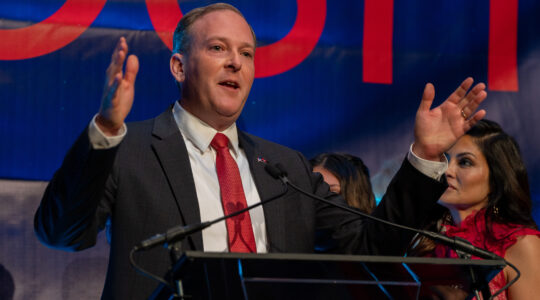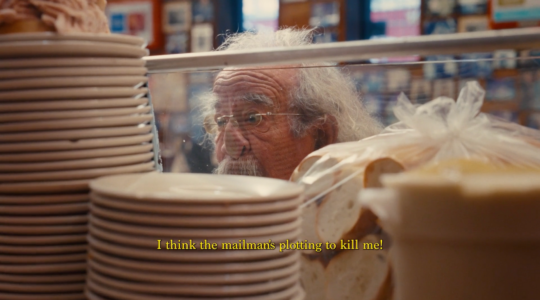For all the Shoah’s omnipresence in our American and Jewish civic religion, Yom HaShoah itself has been less successful at becoming a synagogue-based, or family-based, holy day. The only consensus is the ritual of lighting yahrtzeit candles… and then what?
Holy days are supposed to be, by simple definition, a day that is holy.
But, 49 years after the Knesset legislated Nissan 27, many synagogues seem to think Yom HaShoah’s date is still negotiable. If Kol Nidre night falls on a Monday, well then it’s on Monday. But a remarkable number of synagogues schedule Yom HaShoah events for the Friday before, the Friday after, or whatever night of the week they think best. No serious Jewish holy day is so ill-rooted. No other holy day has so many synagogues scrambling to hold joint services with other synagogues in order to fill the room.
Rabbi Yitz Greenberg, head of the council that runs the U.S. Holocaust Memorial Museum, says attendance is actually growing in certain places. He estimates that a million people attend some event of the U.S. legislated Days of Remembrance. But there has been no common Jewish model of observance, each shul reinventing the wheel.
Yom HaShoah,” says Rabbi Greenberg, “is still a day in formation. We don’t have a text or a ritual handed down from on high. The exciting part is the Jewish people are creating it at the grass roots.”There have been attempts at writing Yom HaShoah liturgy. The most circulated version is a call-and-response service found in the Conservative movement’s Sim Shalom prayer book. No other Yom HaShoah ritual has been so canonized, but Conservative canonization limits appeal to other denominations.Yom HaShoah’s problems may be over. Just before Passover, a non-denominational Yom HaShoah seder was mailed to every affiliated rabbi in the United States, and other Jewish leaders here and in Israel by Jonas Publishing Inc., a new Jewish imprint from Howard Jonas.Jonas, 43, the founder of IDT, an Internet and telecommunications service, is already one of the kindest and most prominent Jewish philanthropists. But with Yom HaShoah so emaciated for ritual, this seder may turn out to be as kind and necessary as any gift could be. (The “Haggadah for the Yom HaShoah Seder,” selling for $5, can be purchased by calling 718-796-4730 or 201-489-4700.)
Jonas says, “I am convinced that the only events remembered in Jewish history are those that have been formally incorporated into ritual practice.” Michael Horen, a respected artist perhaps best known for the ArtScroll Children’s Megillah and now director of special projects for IDT, designed and produced the Haggadah without visual obviousness or excess. The Haggadah is ego-less, minimal, clean and spare.The seder was composed by Rabbi Avi Weiss, spiritual leader of the Hebrew Institute of Riverdale. Rabbi Weiss has been well-known for his highly personal Holocaust activism but, as with the design, this seder’s writing is elegant and ego-less; the author and his denomination are invisible.
The seder is sublime and tender, with biblical economy and gentle cadences, less than 50 pages and mostly in English. It takes about an hour to perform. It is a seder for a sad and approaching time when survivors will no longer be among us to speak for themselves.The seder consists of four parts, evoking a number central to the Passover seder, and language (churban) evoking Tisha B’Av: Churban Gashmi (physical destruction); Churban Ruchani (spiritual destruction); Churban Banim U’Vanot (destruction of the children); and Gevurah (resistance).Each phase traces the particular churban through a preparatory passage, readings, testimony from survivors, songs, re-enactment and reflections. The material is familiar in the way that great art instantly is, utilizing music, poetry and prose that has shepherded us through the last century: “Es Brent” by Mordechai Gebirtig; “Shomer Yisrael” from the morning prayers; “Oyfn Pripitchik” by M. Warshawsky; and the “Partisan’s Hymn” (“Never say this is the final road…”).The only broken strings on this fiddle are some writings that are borderline kitsch, such as the all too famous “I Never Saw Another Butterfly.” Frankly, some of the survivor testimonies are odd choices. For example, there are just two paragraphs of testimony in the section on resistance. The first is the story of a prisoner who helped a Nazi get a regular supply of gasoline for his motorcycle: “Almost every day my husband brought the German some gasoline and because of this my husband could get bread. He had a plan of how to survive.” Sorry, friend, but helping a Nazi gas up is less “Resistance” than it’s “Wheeling, Dealing and Collaborating.” You’d think with all the Warsaw Ghetto diaries and Hanna Senesh and revolts in Sobibor and Treblinka, this seder could do better.
The second “Resistance” testimony is from a liberated woman who wants to live. God bless her, but who didn’t want to live? Resistance means blood, sweat and tears.Hearing the critique Rabbi Weiss quickly admits that the testimonies need upgrading.“At this stage,” says Jonas, “we view this Haggadah as essentially a work in progress,” with all ideas welcome. Far more successful are the re-enactments. For the physical churban, we remove shoes, watches, jewelry and empty our pockets. For the spiritual churban, we take sheets of the Hebrew alphabet and set it aflame. For the churban of the children, “as we seek to experience the suffering of families torn apart, we ask that all children separate from their parents and move to a special section in the corner,” behind a roped-off area.As we eat the bitter herbs at the Passover seder, we eat, of course, potato peels, “this poor food,” that helps us taste “more sharply the pain of our sisters and brothers during the Shoah.
Rabbi Weiss told The Jewish Week, “I’ve always been driven by Shoah memory. They have been high-profile protests, but this is the most significant contribution I’ve ever made. Nothing is remembered in Jewish history if it’s not ritualized, and if we’re not going to ritualize, then Shoah memory is in trouble.“Years back, when I was protesting, I’d wear these mock death camp uniforms. A survivor wrote a blistering attack on me, claiming ‘That uniform is mine.’ I wrote back, ‘God forbid, it’s not like I’m trying to take this from you. But unless those of us who weren’t there can conceive of ourselves as if we were there, it’s going to be forgotten. We weren’t born in Egypt, but we eat their matzoh, we eat their maror. In every generation we’re obliged to look at ourselves as if we left Egypt, as if we experienced the Shoah.”
The New York Jewish Week brings you the stories behind the headlines, keeping you connected to Jewish life in New York. Help sustain the reporting you trust by donating today.




